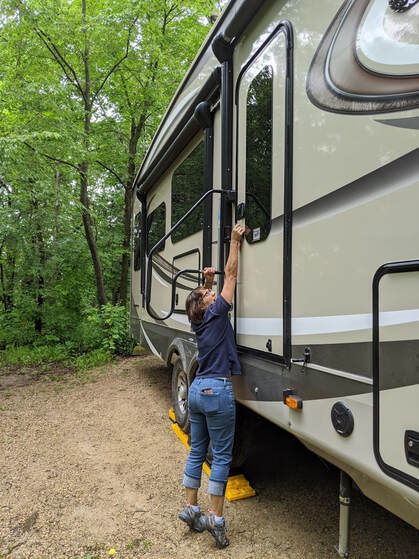 We left South Dakota with plans to stay two nights at a Minnesota campground overlooking the Mississippi River on the Wisconsin border. After an uneventful trip, we exited the highway, followed a curvy dirt road to the campground, pulled into our very uneven spot, and set up camp. Because the site was so uneven, we ended up using every single one of our leveling blocks to prop up the tires and stabilizing jacks on the passenger side of the trailer. Breathing a sigh of relief at having just the right amount of blocks, we tried to get into the trailer. I couldn’t even reach the door handle from the ground. After extending the legs of our stairs as far as they’d go, they hovered above the terrain. If we had tried to climb the stairs in that situation, we could have broken them and/or caused more problems. We searched the area for anything that could support the stairs and spotted three thin boards under the site’s picnic table. Unfortunately, those still left at least a 3-inch gap — and only helped one side of the stairs. After more exploration, Bob found some leftover firewood at a vacated campsite. It was just enough. We stacked the small pieces of wood to create the base our stairs needed and made it into our coach to complete setup. Whew! A Mistake and Low-Hanging Branches The next morning, as Bob climbed the ladder at the end of our coach to attach our Wi-Fi antenna, he noticed something didn’t look right around one of the vents. Upon further examination, he discovered a major issue: A screw had pulled out about halfway from securing the TV antenna to the roof and, as a result, had pulled the rubber membrane — the main roofing material — out from under the nose cap. With a storm in that afternoon’s forecast, Bob secured the roof with duct tape and the shiny type of duct tape that’s used on water heaters. It seems I had failed to secure the TV antenna, which sits toward the front of the trailer, in the proper position for travel. Normally, the rounded portion faces front. This time, however, the rounded portion had faced the driver’s side, leaving the metallic parts of the antenna free to grab onto leaves of low-hanging branches we passed. As we had entered the campground the day before, we encountered some branches that hung a bit low for our 13’ 3” rig. Tagalong made it through, and we didn’t think anything of it. Evidently, we should have. 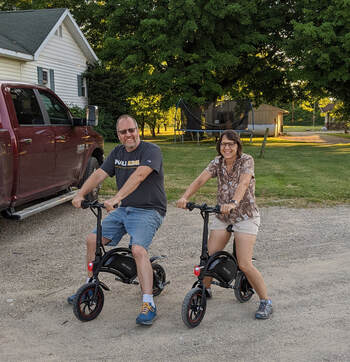 4 States in 1 Day Gulliver is not a storm chaser. No, he’s more of a storm evader — at least when he’s pulling Tagalong. After hemming and hawing about staying at the beautiful campground and risking roof leakage, we ceded to Gulliver's nature and quickly packed up the trailer, hooked up, and hit the road — and some more low branches in the process of leaving. We had planned to spend at least one night in Wisconsin, but storms were expected to blow through there that afternoon too. So, we hightailed it through three states all the way to my cousin’s fruit farm, Piedt’s Farm, in southwestern Michigan, where we could be close to Elkhart, Indiana (RV mecca) if we needed more repairs than we could do on our own. After a two-hour round trip to Camping World the next day to get roofing supplies, we spent the following day hanging out on the roof in the hot sun trying to get all the wrinkles out of the rubber membrane. We taped it down with super sticky tape made especially for RVs and succeeded in fixing the roof. Despite the trials, we’re still having fun, especially since the electric bikes we ordered arrived. We’re enjoying time on the farm, eating fresh produce, spending time with family, exploring my old stomping grounds, and traveling down memory lane. I was born in the area and spent my fifth-grade year here after moving out of state at the age of 4.
11 Comments
 South Dakota doesn’t have the most attractive climate — unless you believe an early-period brochure in the Old Courthouse Museum in Sioux Falls that advertised a nice climate with very little snow. (If you’ve ever followed South Dakota winter weather, you know that’s far from true.) Chicago may be the windy city, but we quickly learned why South Dakota ranks as the third windiest state. We’ve been here nearly two weeks, and the unending wind is blowing us on. The whole trailer sways, the coverings over our slides rattle, and the annoyance doesn’t stop. We had one day, maybe two, when we could put out our awnings. The other days were too blustery. So, why are we making South Dakota our home? Well, most full-time RVers choose one of three states as their state of domicile: South Dakota, Texas, or Florida. If you’re on the road full time, you have to have a place of “residence” in order to register your vehicles, get driver’s licenses, etc. These three states make it relatively easy to do so and have no state income tax and low sales tax. What do the states get out of it? They benefit from income and fees they wouldn’t otherwise have, and they get more voters to boot. Attracted to Lower Fees We chose South Dakota for its lack of state income tax, low vehicle registration fees (compared to Arizona), absence of annual state vehicle inspection, low vehicle insurance rates, and low-cost driver’s licenses — which must be renewed in person every five years. In addition, the state makes it easy to take care of what could otherwise be complicated matters, such as out-of-state vehicle registration transfer. How? Through RV-friendly, third-party, mail-forwarding agencies such as DakotaPost, Americas Mailbox, and Your Best Address. Help Needed It quickly became apparent that registering our vehicles in the state would be way more arduous than we anticipated. Arizona holds the liens and, thus, titles for our vehicles. But South Dakota is a title state, meaning the title is needed in order to register a vehicle. So, we enlisted DakotaPost to request transfer of our vehicle titles, as well as to help us get both vehicles registered. And, bonus: Because we signed up for the DakotaPost mail forwarding service (a requirement to use any of its other services), we can have our South Dakota license plates forwarded to the address of our choice when they’re ready. If you are or become a full-time RVer and use DakotaPost as your mail-forwarding service, please mention that Robert and Lana Gates sent you. Family Heritage South Dakota offers other benefits to us as well. For one, we’ve been able to take advantage of a rare opportunity to spend the past two weeks playing games and interacting with my parents. They moved to Sioux Falls nearly three years ago to be part of the Union Gospel Mission, which my great-grandfather, Thomas F. Morse, started in 1900. My parents had a good run here but grew tired of the cold winters and, unfortunately for us, put their South Dakota house on the market. It’s already under contract, and they plan to leave the state in August. I still have an aunt in the area, however, and we’ve enjoyed spending time with her as well during our stop here. Did I mention this was our first time in South Dakota? Yep, and we didn’t even have time to stop to see Mount Rushmore or the Badlands on our way to Sioux Falls as we were trying to stay ahead of some storms. It’s just as well, though, because parts of the Mount Rushmore state memorial are under construction. We’ll come back when we can see the whole thing and explore the Badlands as well. We haven’t been on the road all that long yet, but we quickly discovered some items that make full-time RV life easier. Whether you’re a weekend warrior or a full-timer driving a motorhome, fifth wheel, travel trailer, truck camper, or something else, you may find the following gadgets helpful as well. I should note, as an Amazon associate, we may earn from qualifying purchases. Here are our top six must-have RV gadgets, in no particular order: 1. Tire Pressure Monitoring System (TPMS) If your rig didn’t come with a TPMS, this is an important must-have to avoid tire issues while traveling. Although Gulliver came with a TPMS, our fifth wheel did not. If we were to have an issue with one of our four trailer tires while en route, we might not even know until arriving at our destination — which might not be near a tire service center. The RV tire pressure monitoring system we purchased and installed, EEZTire TPMS, includes the ability to set alert notifications at parameters of our choosing, such as if a tire reaches a certain temperature or pressure threshold. 2. Solid Rubber Wheel Chocks Our very first camping spot on our RV journey wasn’t super level. We had prepared for such an event by purchasing what we thought were heavy-duty wheel chocks. When we detached our fifth wheel from Gulliver, however, the trailer moved and crunched one of the chocks. That didn’t give us much confidence in their ability to keep our rig, which can weigh up to 17,000 pounds, from rolling. After that, we invested in some solid rubber chocks that are so strong our trailer tires can’t run over them. They may be bulkier and take up more space in our storage compartment, but they also give us great peace of mind. You can’t put a price on that. 3. After-Market Tank Level Monitoring Kit If you only stay at campgrounds where you have full hookups, then the built-in gray, black, and fresh water tank sensors that come with your coach may suffice for your needs. But, if you plan to do any boondocking (dry camping), knowing the accurate level of your holding tanks becomes paramount. Like many other RVers, we faced the dreaded problem of our black tank always registering full, even right after we emptied it. Because we like to boondock, that proved problematic. In addition, our tank monitor dashboard only displayed levels in thirds, which didn’t provide the degree of detail we wanted. So, we invested in the Tech-Edge iSeries Tank Systems Monitor. Tech-Edge is located in Sweet Home, Oregon, only about an hour away from our family in Eugene. We took a nice drive to the manufacturing plant to pick up our kit and enjoyed a scenic lunch stop overlooking a reservoir. No, you don’t have to go to Tech-Edge in person. The company does ship its products. We just didn’t have time to wait for the shipment. Installing these monitors on your own can be challenging. You have to be able to reach an end of each tank in order to attach aluminum tape and sensors and then wire them to the monitoring dashboard. Bob called the company while installing the black tank sensor and found the staff to be extremely helpful. And, we can now gauge the actual percentage in our black tank. 4. Portable RV Surge Protector  This item can cost a pretty penny but, compared to the potential damage it protects against, it more than pays for itself. Plugging in at campgrounds comes with its own set of risks. If you get a faulty hookup, you could fry all the electronics in your coach — refrigerator, microwave, TV, etc. This gadget ensures that doesn’t happen. RV surge protectors come in various sizes and strengths, depending on your needs. We bought the Progressive Industries EMS-PT50X RV Surge Protector as we have a 50-amp rig. Not only is it surge-proof, but it’s also weather-resistant. 5. Leveling Blocks Once you arrive at your camping spot, it’s important to level your coach. This makes for a more enjoyable camping experience while moving about and sleeping in your rig but, more importantly, it protects your refrigerator. RV refrigerators are designed to be as level as possible in order to work properly. One thing that can greatly help in your quest for a level setup is a collection of Camco Leveling Blocks or Lynx Levelers. These can be stacked in pyramid format like LEGO building blocks to build a ramp and resting place for your tires. They can also be used under your rig’s leveling jacks. 6. Command Hanging Strips 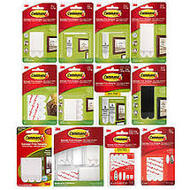 We learned about these amazing pieces of technology by 3M on YouTube. Command Strips come in various shapes, sizes, weight capacities, and colors to help you organize your coach and make it more homey. We use them to store our TV remote, organize belts, hang our shower squeegee, hold our keys, hang pictures and our all-important United States RV map on the wall, and a whole lot more. Those are our six must-have RV gadgets. What are yours?  I never thought we’d be the kind of RVers who spend a night in a rest area or Cabela’s parking lot on their way to a destination. At the outset, we had planned to stay a week in each location we stopped. As is typical, however, those plans changed because our new lifestyle requires us to pay close attention to the weather. After a relaxing, rejuvenating time with family in Eugene, Oregon, we picked up our rig in Medford, Oregon, the morning of June 3, happy to have our home back. Instead of embarking on our transatlantic cruise to London that day as originally scheduled, we departed on a cross-country trek to South Dakota. Since I’m still not working full time (I have had interviews, and I’ve picked up some contract/freelance work in the interim), we decided to make the journey in five days. That would allow us ample time to recover at the end of each day to make the trip enjoyable. Knowing where we planned to be which days, we checked the weather in those locations and learned about some developing thunderstorms. Not wanting to set up or even drive in inclimate weather if it could be avoided, we condensed our five-day journey into four days in an effort to beat the storms. That resulted in some intense drive days — and saddle soreness — but we enjoyed seeing the varying country and wildlife in the states we crossed. Which states were they? Nevada, Utah, and Wyoming before arriving in South Dakota. We weren’t able to put Utah on our map as we only drove through it and didn’t spend a night there. (Sorry, Andy and Erin, but rest assured we’ll be back at some point.) Along the way, we learned some more important RV lessons:
1. Everything Takes Longer Than We Think Just because we’re full-time RVers doesn’t mean we get special treatment when our coach needs service or repairs. We have to wait in line behind the weekend warriors just like they have to wait behind us. Although we had hoped to drop off our coach for only three days, the service center had it for eight. Similarly, just because we think our rig will be ready for pickup at a certain time doesn’t make it true. Even though we arrived at the service center at 9 a.m., we didn’t leave there until 11. The same longer-than-we-think concept applies to packing up and getting on the road. It always takes us longer than we think it will. And, if we have to stop at a dumping station, we can plan on adding another hour to our trip. 2. Use Produce Before Dropping Off the Coach Not expecting to lose our rig for as long as we did, we left everything in the fridge and freezer. Not only did our ice melt and meld together, but our produce also went bad, making for a messy, smelly reunion with the coach. We should have thrown out the ice and eaten the produce or taken it with us rather than leaving it. 3. Cleaning Is a Full-Time Job Gulliver eats a lot of bugs while traveling for days. We need to clean his grill every 1,000 miles or so to keep him looking shiny. Our trailer also needs regular attention. I had asked my fellow full-time RVer sister-in-law if she cleans her rig before or after moving. The answer was both. We need to clean the coach before closing it up for a journey if we’ve been in a single location for more than a few days. But we also need to clean the trailer once we arrive at a destination if we were on the road for a while because dust enters from the slides and from the tires jostling things around on the highways. 4. 200-300 Miles Is Ideal for One Day We arbitrarily chose a goal date of August 1 to arrive in Massachusetts. That meant ambitious journeys between locations spaced a week apart. Because we’ve learned lesson 1 above, we know those targeted destinations aren’t ideal and have made some changes to our schedule and itinerary as a result. (That’s also what’s resulted in our long-haul treks.) In the future (at least after August 1), we plan to go a little slower and cover less ground in a single day — and not choose arbitrary dates to be in a certain location if we can help it. It’s more important to enjoy the journey. |
AuthorThis is the travel blog of full-time RVers Bob and Lana Gates and our truck, Gulliver, and fifth wheel, Tagalong. Categories
All
Archives
July 2024
|
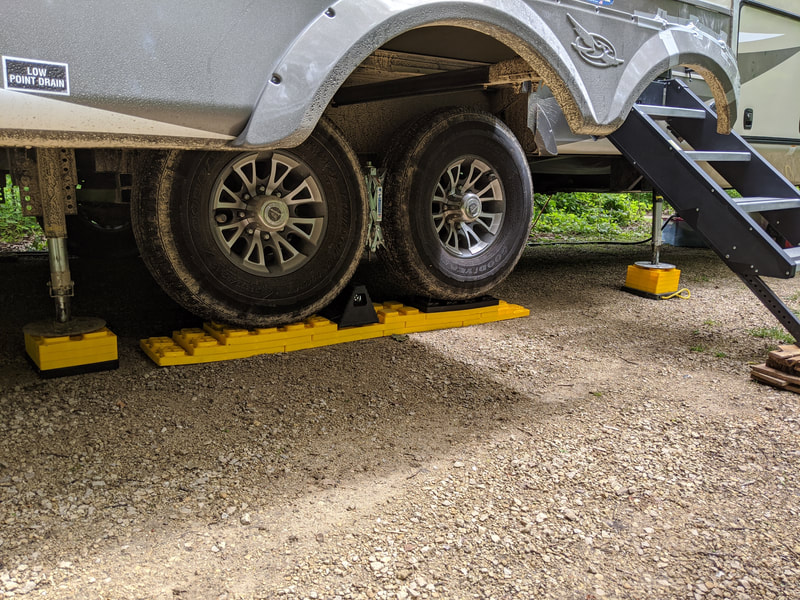
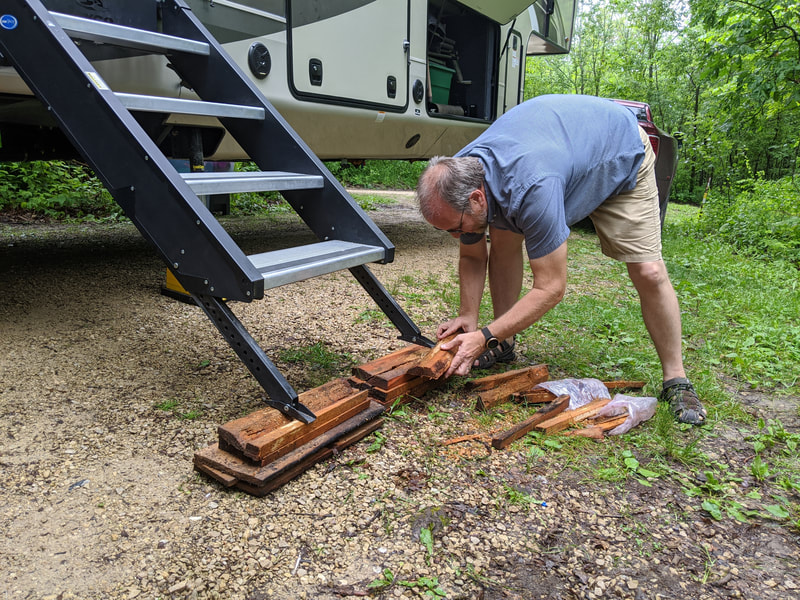
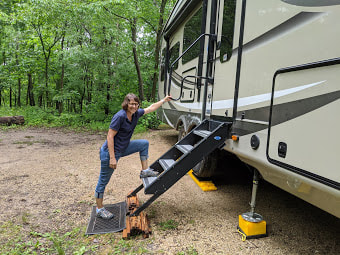
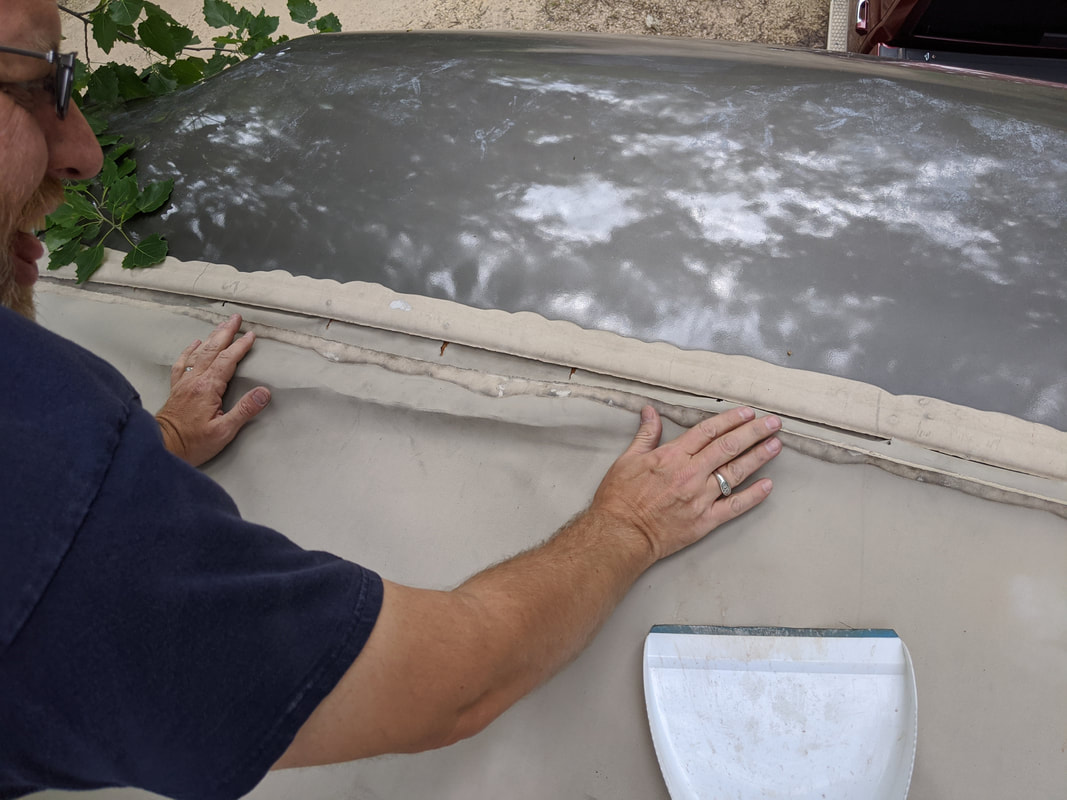

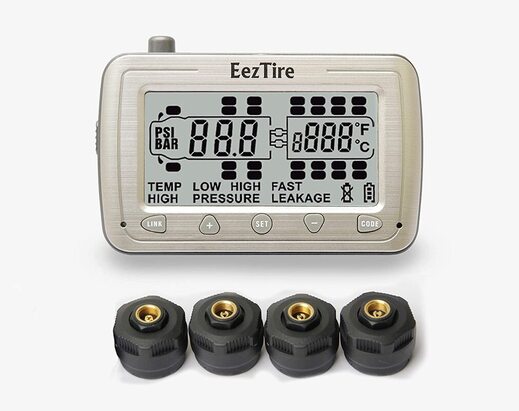
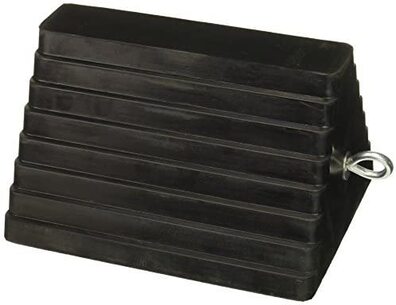

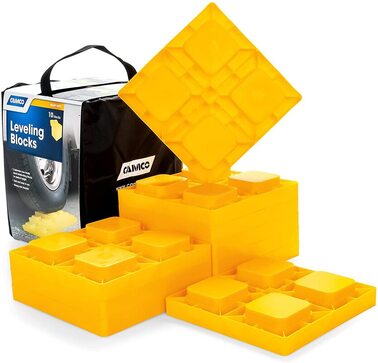
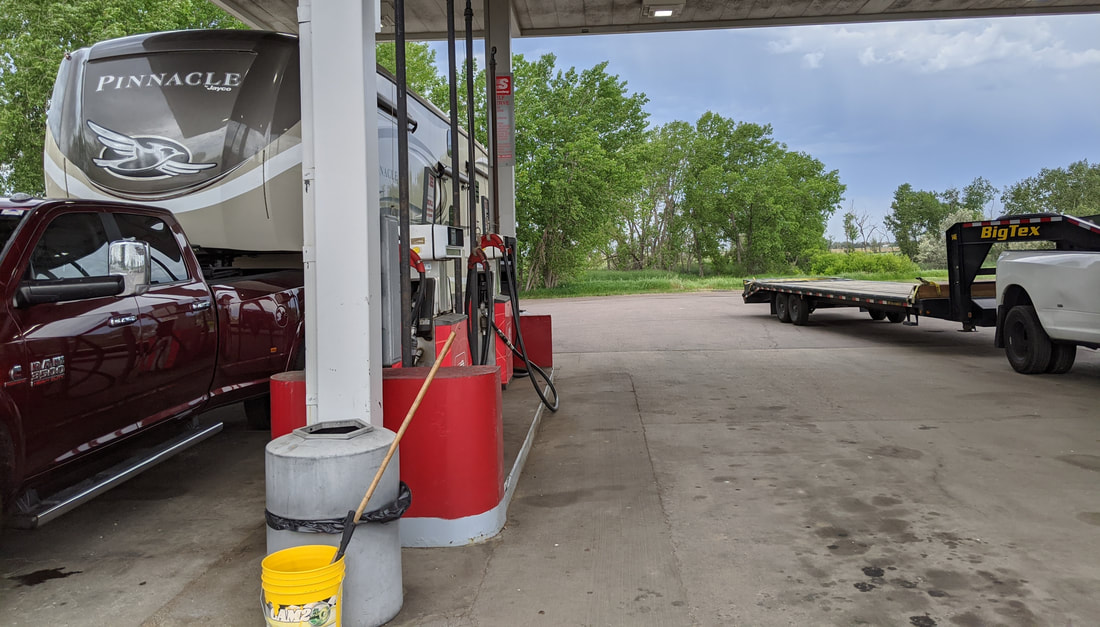
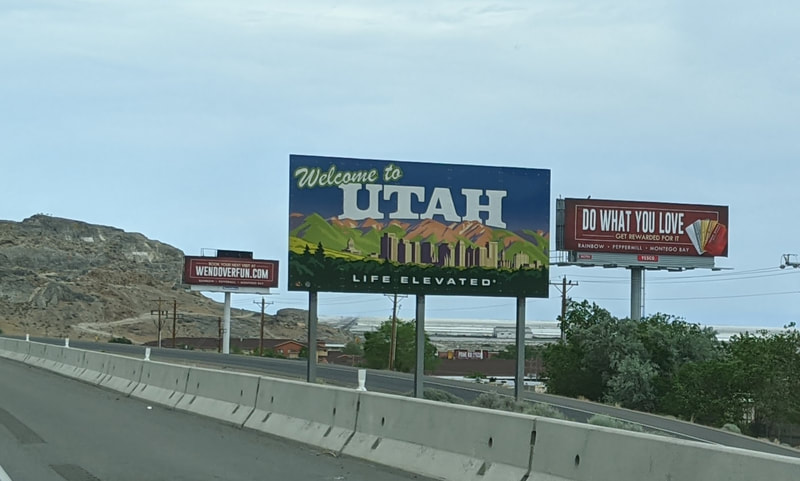
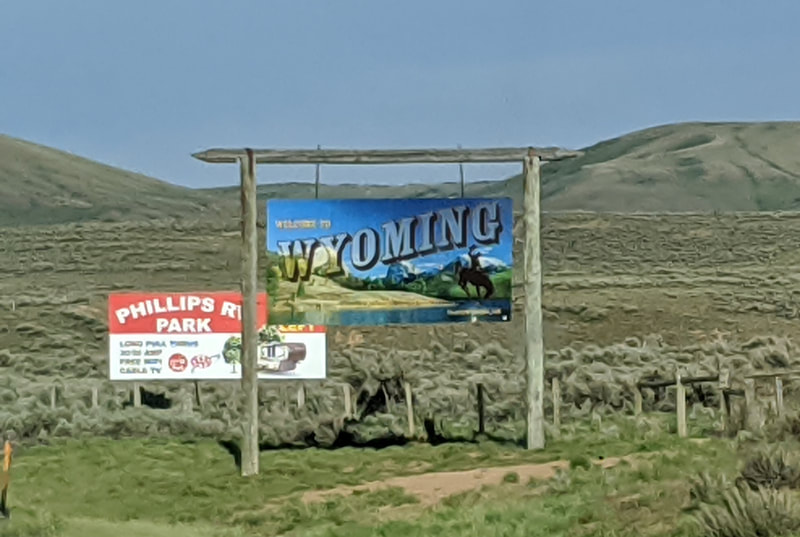
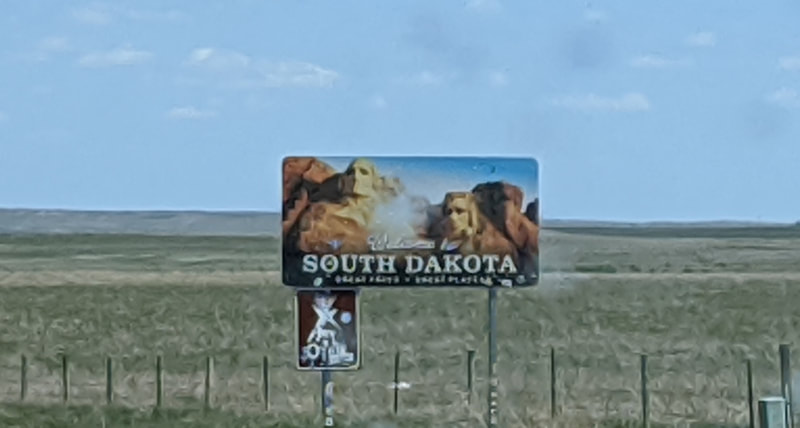
 RSS Feed
RSS Feed